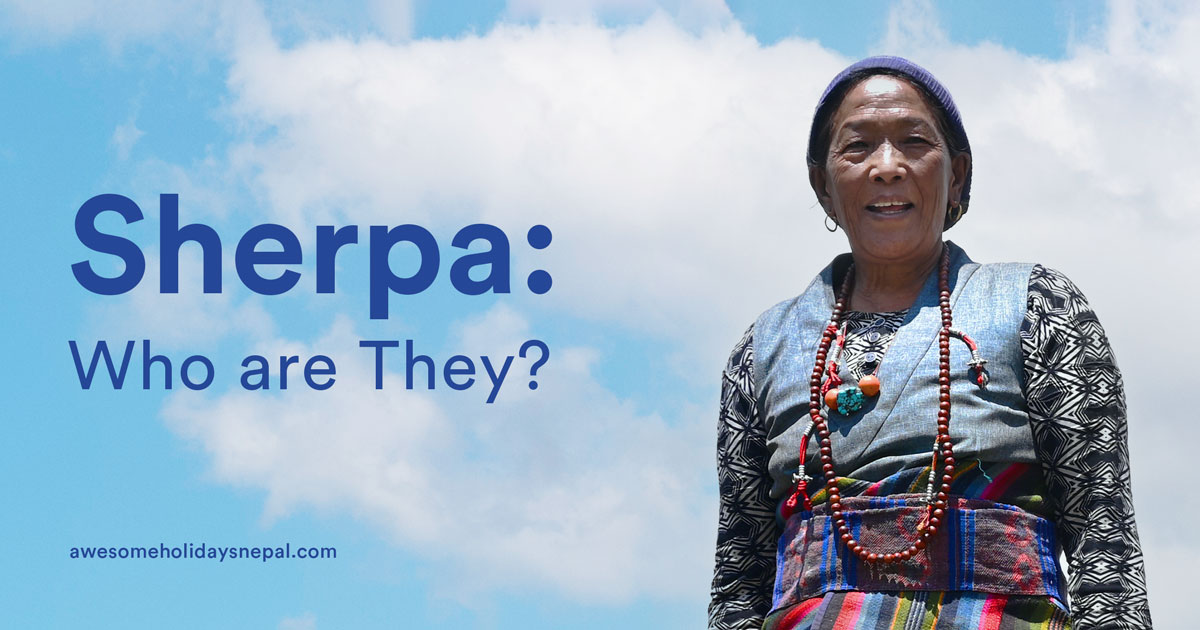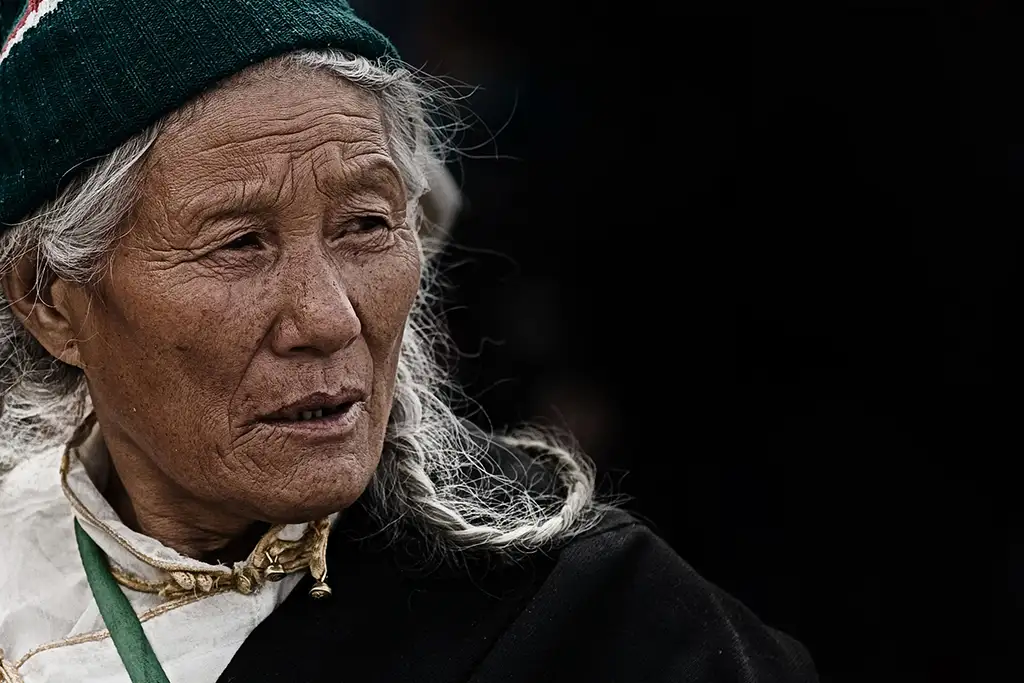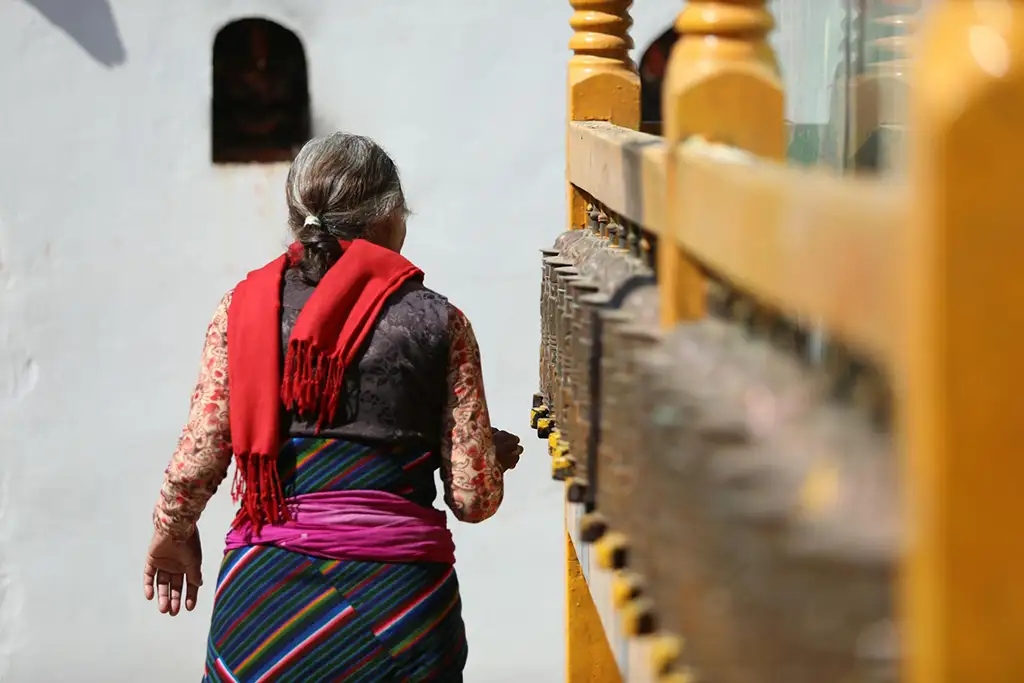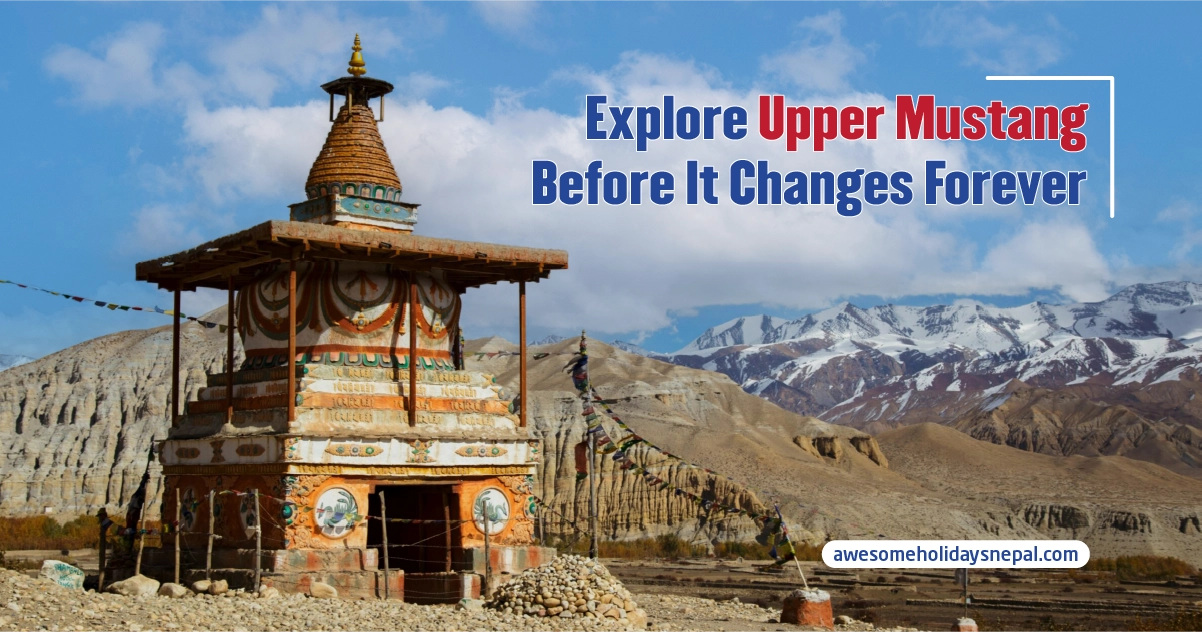Sherpa: Who are They?

The Sherpa people, a remarkable ethnic group, are renowned worldwide for their extraordinary mountaineering skills, endurance in high-altitude environments, and deep-rooted cultural traditions. Synonymously, Sherpas are also referred to as the “Guardians of the Himalayas,” and that rhymes with the majestic Himalayas. But while their invaluable assistance in mountaineering has earned them global admiration, the Sherpa people are so much more than exceptional climbers.
The history of the Sherpa people is intertwined with the mountains they revere and filled with stories of resilience, spirituality, and more. So, who exactly are the Sherpa people, and what makes their culture so unique beyond their role in climbing? Let’s explore their fascinating heritage together.
History of the Sherpa People

The Sherpa People originally arrived from eastern Tibet after crossing the Nangpa La Pass at 5,900 m, 19,200 ft. The term Sherpa comes from a Tibetan word: shar (ཤར, ‘east’) and pa (པ, ‘people’). Thus, the Sherpa people are from the east, which is how they got the name Sherpa.
Often, Sherpas trace their origins to nomadic ancestors who migrated from the Kham region of eastern Tibet in the 13th and 14th centuries, settling in the Khumbu and Solu regions of the Himalayas in modern-day Nepal. This migration, driven by religious conflict and the pursuit of better lands, led to four primary clans that expanded into over 20 distinct groups.
For centuries, these people were known as traders and herders, facilitating trade between Nepal and Tibet and cultivating hardy crops like barley and potatoes. The most iconic moment in Sherpa history came in 1953 when Tenzing Norgay, alongside Edmund Hillary, became one of the first people to reach the summit of Mount Everest.
This historic achievement cemented the Sherpa people’s reputation as expert climbers. While mountaineering brought global recognition, the Sherpa people’s rich culture, religious traditions, and enduring connection to their homeland remain central to their identity today.
Getting to Know Sherpa People Better
There’s much more to know about the Sherpa people apart from their glorious history. Whether it’s their exceptional physique, which makes them capable of making ascents, or their rich cultural history, there’s much more to know.
Exceptional Physique
The Sherpa People are blessed with exceptional physiques. Despite the extreme weather, they have adapted to the environment’s demands over centuries and thrive in this atmosphere. It has been said that this is all written into their DNA, and their remarkable endurance at high altitudes is not just due to their upbringing.
Moreover, a 2010 study shows that 30+ genetic factors make their bodies best suited for High altitudes, including EPAS1, also known as the “super-athlete gene.”
Likewise, another study by the University of Cambridge found that Sherpas have evolved the process of oxygen more efficiently than most, with higher levels of nitric oxide in their blood so that they can use oxygen more effectively in thin mountain air. These genetic adaptations explain why Sherpas can perform astounding feats of endurance in conditions where others struggle for breath.
Further, a 2016 study on Sherpas suggested that a small portion of Sherpas’ and Tibetans’ allele frequencies were from separate ancient populations, which were estimated to have remained somewhat distributed for 11,000 to 7,000 years.
Rich Sherpa Culture

From the language and clothing to the Sherpa people’s religious practices, the Sherpa’s cultural practices are as raw and unique as the people themselves.
The language Sherpas Speak
When we talk about the culture and identity of Sherpas, we cannot forget the language. Sherpa culture is deeply intertwined with their language, which is as colorful as the landscape they inhabit. The language belongs to the Tibeto-Burman family and is related to Tibetan but distinct enough to be unintelligible to Lhasa Tibetan speakers.
The Sherpa language is primarily spoken but occasionally written using Tibetan or Devanagari script. Most Sherpa people are bilingual, so they speak fluent Nepali as well. Similarly, those involved in the mountaineering industry often learn additional languages to communicate with the many tourists and climbers they assist.
Sherpa Clothing
Now, regarding their clothing, they are inspired by traditional Tibetan garments, reflecting both practicality and heritage. As for men, they wear long woolen robes, also referred to as “bahu” or “chuba.”
Similarly, women wear dresses known as “Bangkok” paired with aprons known as “pandan.” These clothes resemble Tibetan clothing. These traditional garments show the culture and are also designed to keep Sherpas warm in the freezing conditions of the high Himalayas.
Sherpa Religions
Regarding religion, the Sherpas’ spiritual life is deeply rooted in the Nyingma sect of Tibetan Buddhism. This tradition is imbued with shamanistic elements and ancient mysticism from the pre-Buddhist Bon faith.
Additionally, the Sherpa people’s devotion extends beyond Buddhism’s teachings. They also believe in numerous powerful deities, spirits, and demons inhabiting the awe-inspiring Himalayan landscape. Even the majestic peaks, such as Mount Everest and Mount Makalu, are revered as sacred gods.
The region is dotted with colorful monasteries or gompas, such as the renowned Tengboche Monastery, where lamas in vibrant red robes lead prayers and rituals that echo through the mountain valleys. Intricately carved mani stones, inscribed with the sacred mantra “Om Mani Padme Hum,” line the trails, offering blessings to all who walk by.
With a spiritual life that intertwines reverence for nature and ancient Buddhist traditions, the Sherpa people embody a serene yet powerful devotion that enhances the mystical allure of the Himalayas.
Festivals the Community Observes
Another important aspect of Sherpa’s cultural identity is their festivals, which are often religious. Losar, Dumje, and Mani Rimdu are some of the main festivals in the Sherpas.
Losar, which marks the Tibetan New Year, brings the community together in a joyful affirmation of spiritual beliefs and cultural values. It falls in the month of February (Falgun in Nepali Month).
The festivals are essential aspects of their lives. Sherpa people celebrate all of their festivals with elaborate rituals, singing, feasting, masked dances, and more. During these festivities, the entire community becomes alive with vibrant colors and traditions.
Do have a look at the top 10 festivals celebrated in Nepal.
Foods in the Sherpa Community
The Sherpa diet is a simple and flavorful blend of tradition and sustenance. They are hearty and have the charms of the rugged Himalayas. The Sherpa cuisine is dominated by starchy dishes, with tsampa, a roasted barley flour porridge. They often start the day with milk or salty Tibetan tea that warms you.
As for lunch, the boiled potatoes are dipped in spices or a dense grain dough.
Similarly, sherpas have a “shape” for dinner. It is a nourishing stew filled with potatoes, dough balls, and vegetables.
Sherpas enjoy Tibetan tea infused with salt and butter at nearly every meal, while local brews like chayang provide a festive touch on special occasions. The signature dishes such as riki kur (crispy potato pancakes), Thukpa (noodle soup), mo: mo (savory dumplings), and more are just out of this world. These dishes will keep you wanting more.
Now, some of the modern foods have found their way into Sherpa households, but traditional favorites like tsampa are still cherished as part of their heritage and widely loved today.
Mountaineering: The World’s Unsung Heroes

Often, the mountaineering achievements of Sherpas are overshadowed by foreign adventurers as they guide and assist them. Sherpas truly are the unsung heroes of the Himalayas.
Sherpas were the muscle and brains behind some of history’s most famous climbs. We cannot forget the legendary ascent of Mount Everest (Sagarmatha) by Tenzing Norgay and Edmund Hillary in 1953. Tenzing Norgay was an expert climber who became a national hero and a symbol of the Sherpas’ strength and determination.
Likewise, Lakpa Sherpa, another trailblazer, became the first Nepalese woman to scale and descend Mount Everest in 2000. She’s gone on to summit the mountain more times than any other woman.
Another name, Babu Chiri, is unforgettable. He set two remarkable world records: he spent 21 hours on the Everest summit without supplemental oxygen and ascended the mountain fastest in just under 17 hours.
These feats are just some of the few extraordinary contributions from Sherpas, who gave their lives and time to the mountaineering world.
Summing Up the Story of Sherpas
Often, there’s a preconceived notion that the Sherpas are just guides or mountaineers; you are wrong. The Sherpa people are more than that. They are the heartbeat of the Himalayas and have a far richer and profound identity.
Yes, the Sherpas are globally renowned and admired for their incredible mountaineering feats. But they equally flourish as farmers, traders, and businesspeople who gracefully preserve ancient culture and traditions with contemporary life.
One can truly appreciate the Sherpas if one sees them beyond their role as guides and climbing prowess. After that, you will recognize them as guardians of the Himalayas, a community with a rich history, culture, and tradition with an unbreakable bond with nature.
You will witness the timeless spirit of the Sherpas, where courage and devotion blend in harmony with the majestic Himalayas.
We hope that you will see the Sherpas in a new light beyond the misconception and categorization as guides.
FAQs
Expand AllWho are the Sherpas?
Sherpas are remarkable ethnic group who are native to the mountainous regions of Nepal, Tibet and India. They are popularly known for their mountaineering skills, tenacity, and hospitality.
What religion do Sherpas follow?
Sherpas mainly follow Tibetan Buddhism, specifically the Nyingmapa (Red Hat) sect. Their religious practices are a blend of Buddhism and pre-Buddhist Bon traditions, emphasizing harmony with nature and spiritual rituals.
What is the origin of the word “Sherpa”?
The word Sherpa originated from a Tibetan word: shar (ཤར, ‘east’) and pa (པ, ‘people’). So, it means “people from the east”.
What is Sherpa traditional clothing?
Men wear chuba, a long woolen robe fastened with a sash known as kara, so creating a pouch for transporting goods. Women wear comparable robes with vibrant aprons. The chilly Himalayan climate calls for Sherpa clothing.
How do Sherpas view Mt. Everest?
Sherpas call Everest “Chomolungma”, meaning “Mother of the World”, and consider it a sacred mountain. Before climbing, they perform rituals to ask permission from the mountain deities.
Where do most Sherpas live?
The majority of Sherpas live in the Solukhumbu region of eastern Nepal, including areas such as Khumbu, Pharak, and Barun Valley.
Where is the largest Sherpa community outside Nepal?
With about 16,000 members, New York City has the biggest Sherpa population outside of Nepal. Although other Sherpa settlements can be found in places like India and Bhutan
Are all mountain guides in Nepal Sherpas?
No. Although many guides are Sherpas, not all are so. The term “Sherpa” is often misapplied to refer to any guide or porter irrespective of ethnic background. True Sherpas are an ethnic group with unique historical and cultural background.
Related blog posts
Discover a choice of tourist destinations loved by most of our visitors. Whether you're on a jungle safari to spot rare animals or walking through a world heritage site, these well-planned itineraries cover the major highlights of Nepal.




